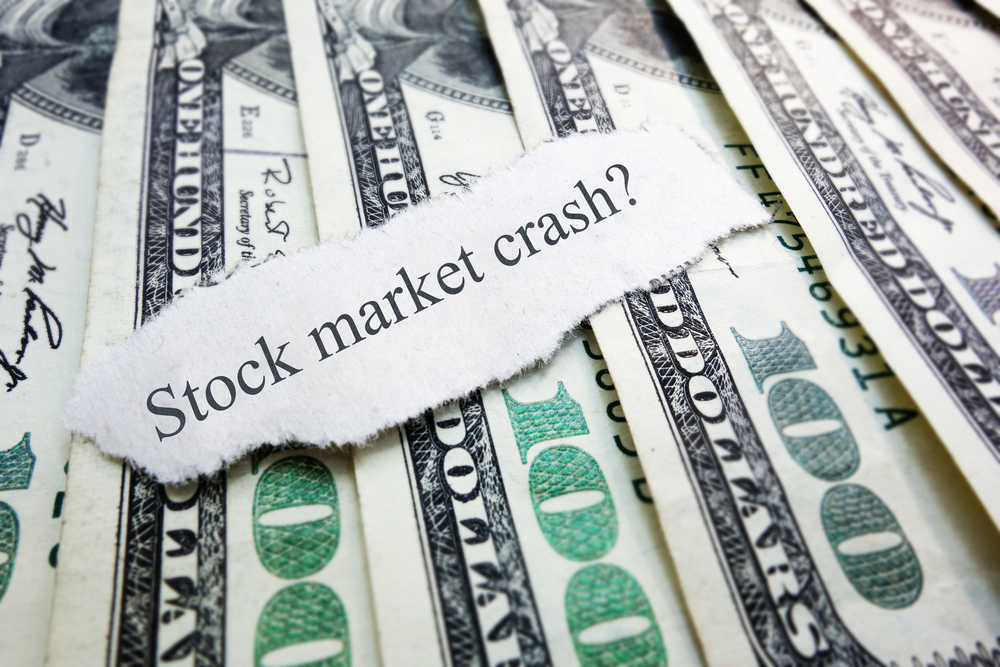When it comes to analyzing the current stock market, I tend to put more emphasis on the current market environment versus how it fared based on a similar historical situation.
I don’t ignore the way the markets have reacted to economic events in the past, because, after all, history repeats itself. But I believe that each situation is truly different. A different set of circumstances, events or market manipulation is taking place that makes it hard to compare it to a time that preceded it.
With that said, there is one theory I believe holds true through the test of time: the Three Steps and a Stumble rule.
Edson Gould, an economist from the 1960s and 1970s, theorized this rule. It states that stocks, in general, decline (stumble) after three consecutive interest-rate hikes (three steps) by the Federal Reserve.
I may be jumping the gun a bit by bringing this up now, but it’s important to note that the Fed believes it is on track to raise rates at least three more times in 2016, which would mean we could cross the “three steps” threshold in just a matter of months.
This is your early warning sign that danger is just around the corner. A tightening cycle by the Fed does one thing every time: slow our economy and end up in a stock market crash.
History tells us this.
And if you haven’t taken action yet, you may be running out of time.
The Fed Precedes Economic Collapse
Just a few weeks ago, the Fed initiated its first rate hike in nearly a decade to ease off the zero bound. In its forecast, the Fed believes the fed funds rate will be near 1.5% by the end of 2016, 100 basis points above our current 0.25% to 0.5% level. This tells me to expect at least three hikes in 2016, and we could see our third hike in total by as early as the middle of the year.
Now I know that the Three Steps and a Stumble rule is not as timely as it historically has been.
For example, it worked great in the ‘60s and ‘70s when the Fed wasn’t the focal point for Wall Street. But today, the Fed is transparent, which is why I already see the path the Fed believes it is on. That means analysts are already starting to price in this series of expected rate hikes.
In 2004, for example, the Fed surpassed the three steps and the stumble didn’t kick in. In fact, it took three more years and a series of more rate hikes before the market collapsed.
There’s an alternate version of this rule today, viewing a step not as a single rate hike but as an overall form of tightening by the Fed. This view suggests that a collapse is even more imminent.
Thanks to transparency, we knew that tapering of quantitative easing (QE) was a tightening cycle for our economy, but the Fed was still purchasing large amounts of assets — Step One.
Then, ending QE was another step of tightening for our economy — Step Two.
And then, Step Three: a new tightening cycle in the form of an interest-rate hike.
No matter how you look at it, the Fed is well on its way to completing a new tightening cycle, which doesn’t end well for the markets.
The reality is that the Fed has preceded every modern market crash with a tightening cycle. It did so prior to the Asian currency crisis in the late ‘90s. The Fed tightened just before the dot-com bubble exploded in 2000. It hiked rates ahead of the global recession of 2008. And now it is hiking rates yet again.
I wonder how it will end. Perhaps with yet another stock market crash.
Here’s what you can do to protect yourself…
4 Steps to Protect Your Assets From a Market Crash
Instead of giving you a direct action to take, I’ll walk you through the steps you should take today to be prepared for a stock market crash. This will position you to take advantage of the cheap stock prices that lie ahead.
Step 1: Lower your exposure. It’s that easy. Take some cash; park it in a bank CD. Not for yield per se, just for protection that pays a tad bit more than stuffing it under your mattress.
Step 2: Make sure whatever you are holding is diversified — for industry as well as direction of the market. In other words, if you buy only stocks, own shares of an exchange-traded fund (ETF) that gives you shorting exposure (an ETF that benefits if the market falls). Several of these exist; one is ProShares UltraShort S&P 500 (NYSEARCA: SDS). You don’t have to buy this one — any of them will do. Be sure to keep upside exposure as well. Timing an economic crash is nearly impossible, so you want to benefit from shares drifting higher.
Step 3: Sit idle. Markets are going to be volatile. There will be times it looks like the market will go higher forever, but it can’t … and won’t. Don’t go all in. Maintain your short exposure. Same goes for a market dip. Don’t dump your long-term holdings. Strong, stable stocks that you plan on holding for years can weather the downturn. You will have paper losses, but your short exposure should offset that.
Step 4: Wait for a bottom. Of course, predicting a bottom is impossible. Pundits will always try to call it, and it might be on their sixth, seventh or eighth try before they get it right. So wait for the market to actually form a bottom and start to head higher. Then ease back in with some of the cash you are parking on the sidelines today.
That’s it. These are your four steps to offset a market crash.
Regards,
Chad Shoop
Editor, Pure Income
